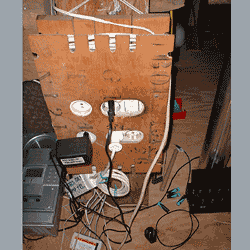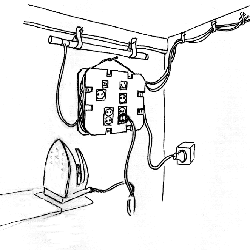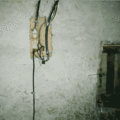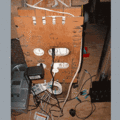
When rented rooms or houses lack electrical power facilities, i.e. wiring, switches, and power outlets, or where existing electrical facilities are sub-standard; a central plug box may be directly connected to the grid. Such a plug box allows electrical facilities to be added inexpensively to a room or home with little or no structural changes to the building. The plug box may also contain a ballast coil for fluorescent tube lamps that use much less electricity than incandescent bulbs yet give the same amount of light.
For safety the plug box must be enclosed in an electrically insulated box or "house" in order to prevent people from accidentally touching live electrical contacts or wires.
How[edit | edit source]
- The plug box or electric-connections box contains the needed number of sockets and switches.
- Electric parts for fluorescent tube lamps (electrical ballast) can be built into the plug box.
- The cover allows enough protection from accidents by enclosing the exposed wires.
- In order to prevent the possibility of a person being tangled in the cable, it may be wound around the hosing box.
-
"Normal" unsafe situation
-
Safe situation
AC connection[edit | edit source]
For your convenience the AC male connector can be built into an AC power device. Then the AC male connector receives the electricity from the AC female connector; typically there is no power on this socket if there is no female connector connected. The female connector is responsible for giving power to the male connector.
-
standard 220v AC male connector
-
standard 220v AC female connector




